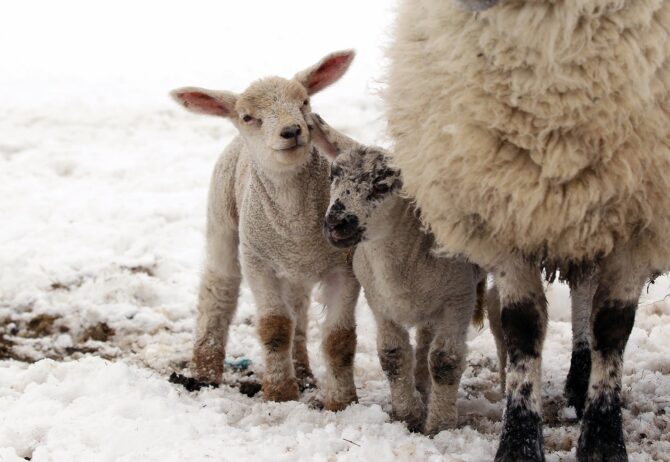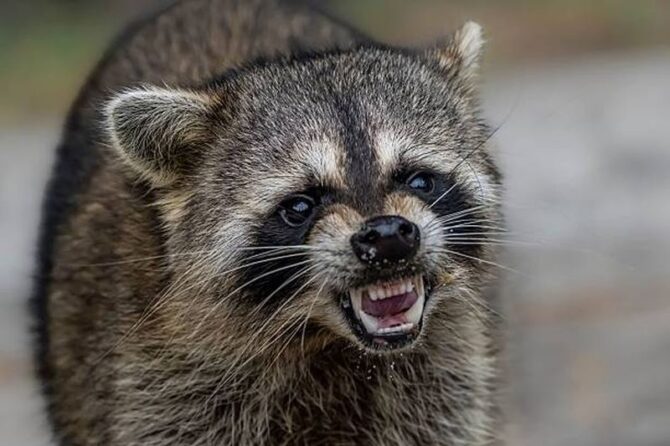Ever since I was a child, I’ve been fascinated by the wonders of the natural world. Those weekend visits to the zoo, or the countless hours spent watching nature documentaries, instilled in me an unending curiosity for Earth’s incredible inhabitants.
Our planet houses not just the small and nimble, but also the grand and mighty – creatures that showcase the sheer possibilities of evolution and adaptation. The boundless marvels of nature are countless, but in this article, we shine a spotlight on ten such masterpieces.
Join me on this journey as we explore the world of nature’s most powerful giants, the top 10 heaviest animals.
10. Kodiak Bear: The Titan of the Isles

On the rugged terrains of the Kodiak Archipelago in Alaska, the Kodiak bear stands as a testament to nature’s grandeur. With a luxurious coat that helps them brave the chill and massive claws that make them adept hunters, these bears are the epitome of wilderness. Living in a land of extremes, they have evolved to be both ferocious predators and tender guardians of their cubs.
Insight: The relationship between Kodiak bears and the indigenous Alutiiq people of the islands spans thousands of years. They are woven into their legends, stories, and cultural practices, underscoring the deep connection between humans and the natural world.
9. Hippopotamus: Africa’s River Behemoth
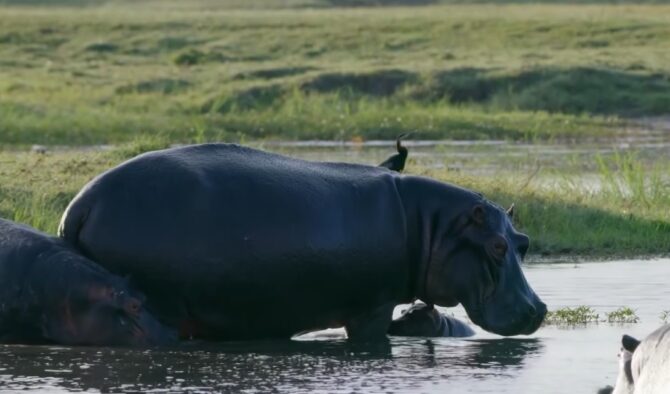
Found wallowing in the river systems of sub-Saharan Africa, the hippopotamus is truly a force to be reckoned with. While they might seem docile, sunbathing and frolicking in water bodies, they are known to be territorial and can be very aggressive when provoked. But it’s not all about power; they’ve also got speed on their side.
Insight: Think you can outrun a hippo on land? Think again! Despite their robust appearance, hippos are remarkably agile and can sprint with surprising speed, often catching many off guard.
8. Saltwater Crocodile: The Aquatic Ambusher
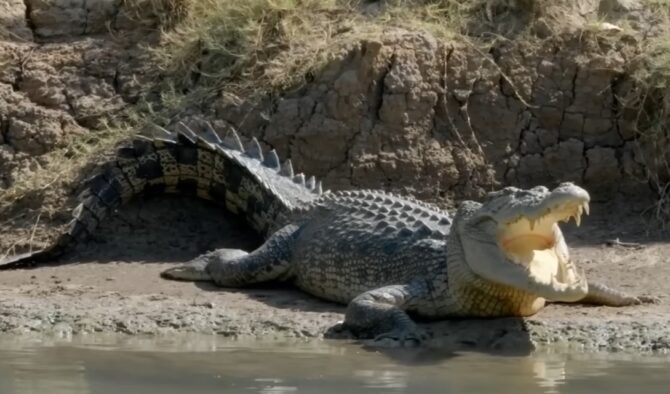
Lurking in the estuaries and mangroves of the Indo-Pacific region, the saltwater crocodile is nature’s ultimate ambush predator. These reptiles are masters of stealth, often lying in wait just below the water’s surface, only their eyes and nostrils visible, as they patiently await to eat their prey.
Insight: Their predatory prowess is further enhanced by their incredibly powerful jaws. With a bite force unparalleled in the animal kingdom, a saltwater crocodile’s snap could exert pressure comparable to a car’s weight!
7. Rhinoceros: The Armored Herbivore
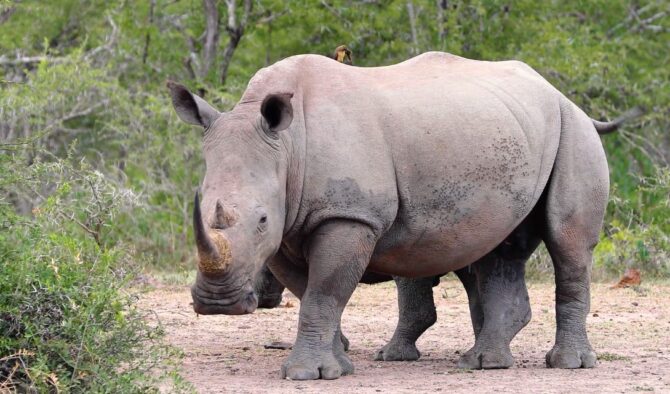
Roaming the grasslands and forests of Asia and Africa, the rhinoceros is an emblem of raw strength and tenacity. Their impressive, armor-like skin acts as a protective shield against potential threats. While they might appear intimidating, rhinos, for the most part, are solitary and contemplative creatures, often seen grazing peacefully in their natural habitat. Unfortunately, their natural habitats are getting destroyed by deforestation and they’re losing their homes.
Insight: While rhino horns are often a target for poachers due to their value in traditional medicine, they are, interestingly, made of keratin. That’s the same material that constitutes our hair and nails!
6. Bovini: From Bisons to Buffalos
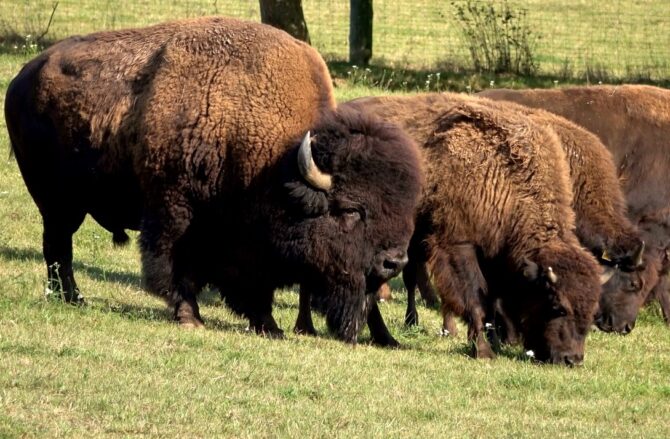
Bovini, a tribe of large ungulates, are quintessential to the landscapes they inhabit. The American Bison, with its rugged appearance and shaggy mane, once roamed the North American plains in massive herds. On the other side of the world, the water buffalo, with its sweeping horns, has been an integral part of rural Asian life, aiding agriculture for centuries.
Insight: The history of the American Bison is a poignant one. Once numbering in the millions and central to the life and spirituality of Native American tribes, they were brought to the brink of extinction in the 19th century. Thankfully, conservation efforts have helped their populations rebound, reminding us of the importance of preserving nature’s treasures.
5. Polar Bear: The Arctic Apex Predator
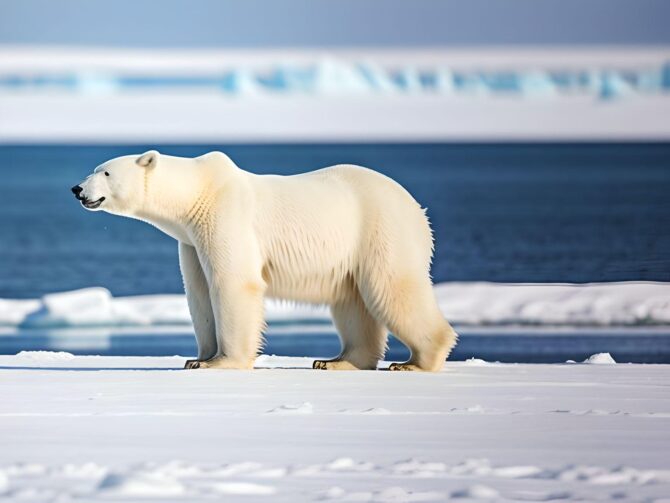
In the stark and chilling beauty of the Arctic, the polar bear reigns supreme. Their thick, white fur not only provides camouflage against the snow but also insulates them from the cold. They have evolved to be exceptional hunters, with seals being their primary prey, but their diet is very diverese.
Insight: While they might seem primarily land-bound due to their massive size, polar bears are surprisingly adept swimmers. They can traverse icy waters for miles, sometimes swimming nonstop for days, in search of food and new hunting grounds.
4. Giraffe: The Long-Necked Loomer

One of the favorite animals in the world, majestically pacing the African savannas, the giraffe is a sight to behold. Their elongated necks, often seen stretched to nibble on treetops, are a marvel of evolutionary adaptation, giving them access to a diet most other herbivores can’t reach. Their large, expressive eyes provide them with a wide-angle view of their surroundings, an advantage against potential predators.
Insight: Here’s a fun fact that often surprises people – giraffes, despite their impressive neck length, have the same number of neck vertebrae as humans. That’s right, just seven!
3. Whale Shark: Gentle Goliath of the Oceans

Despite their intimidating name, whale sharks are the gentle giants of the ocean realm, making them one of the least dangerous sharks. Unlike many of their shark relatives, these creatures are not predators but graceful filter feeders, swimming through the waters with their wide mouths open, sieving plankton for nourishment. Their peace-loving nature has endeared them to divers and marine enthusiasts worldwide.
Insight: Nature has bestowed upon the whale shark a mesmerizing pattern of spots and stripes, which is not just for beauty. Each pattern is unique, akin to human fingerprints, making it possible to identify individual sharks.
2. African Elephant: The Terrestrial Titan
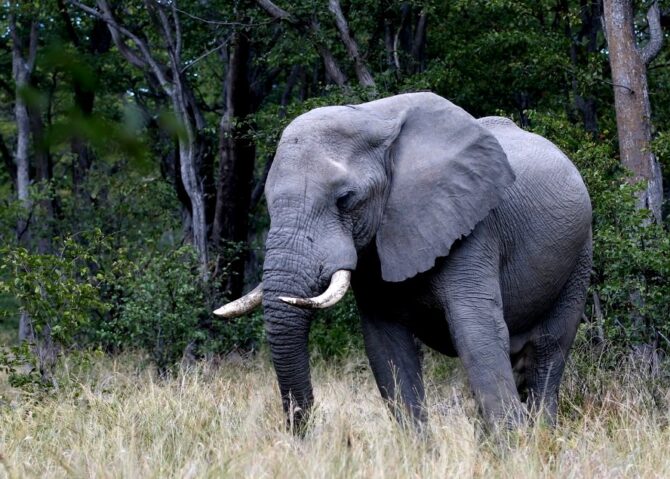
When you look into the eyes of an African Elephant, you’re met with wisdom passed down through generations. Traversing the vast savannas and forests, these gentle giants represent the heartbeat of the African safari. Their large ears not only aid in cooling but are also sensitive receptors of sounds we can’t even fathom.
Insight: An elephant’s realm of communication is vast. They can convey messages and emotions to their kin through low-frequency sounds, known as infrasound. This mode of communication is so powerful, it can traverse for several kilometers, linking herds and ensuring unity and survival.
1. Blue Whale: The Unrivaled Giant

These colossal creatures dominate the ocean with grace. The blue whale’s enormity isn’t just about its weight; it’s about the sheer presence and the ripples it creates in the marine ecosystem. With every move, it demonstrates the majesty of the marine world.
Insight: Can you imagine the size of a heart or veins that keep such a creature alive? The blue whale’s heart is so monumental that, astonishingly, a human could swim through its largest artery!
The Order of Magnitude
| Animal | Weight (kg) | Weight (tons) |
|---|---|---|
| Blue Whale | 140,000 kg | 140 tons |
| African Elephant | 6,800 kg | 6.8 tons |
| Whale Shark | 19,000 kg | 19 tons |
| Giraffe | 1,200 kg | 1.2 tons |
| Polar Bear | 600 kg | 0.6 tons |
| Bovini (like American Bison) | 900 kg | 0.9 tons |
| Rhinoceros | 2,300 kg | 2.3 tons |
| Saltwater Crocodile | 1,000 kg | 1 ton |
| Hippopotamus | 1,500 kg | 1.5 tons |
| Kodiak Bear | 480 kg | 0.48 tons |
Why Did These Animals Become So Heavy?

The world’s heaviest animals didn’t just randomly grow to their massive sizes. Their immense stature is a result of millions of years of evolution, tailored by various environmental factors and survival necessities.
Food Availability
The amount and type of food accessible play a significant role in dictating an animal’s size. Abundant food resources in certain habitats allow species to grow larger.
The blue whale, for example, thrives in the nutrient-rich oceans, allowing it to attain much greater sizes compared to other whales, like the humpback, which might inhabit regions with less food availability.
Predator Avoidance
Size is an effective deterrent against potential threats. Larger animals present a greater challenge for predators, both in the chase and the final confrontation.
The hippopotamus, despite being herbivorous, has few natural predators owing to its daunting size and aggressive nature.
Climate Adaptations
The climate of a region can influence the size of its inhabitants. In colder climates, a larger size means more body mass to retain heat.
The elephant seal, for instance, has adapted to the frigid Arctic waters with its massive size aiding in insulation against the cold.
Evolutionary Advantage
Over countless generations, animals evolve sizes that best fit their ecological niche. The blue whale’s immense size, for instance, is evolution’s answer to efficiently capturing its primary food source: krill.
FAQ
What do the heaviest animals in the world eat?
The heaviest animals in the world eat a variety of foods. The blue whale eats krill, which are small shrimp-like creatures.
The fin whale eats copepods, which are tiny crustaceans. The sperm whale eats fish and squid.
The African elephant eats a variety of plants, including leaves, bark, and fruit. The giraffe eats leaves from trees.
How do the heaviest animals in the world reproduce?
The heaviest animals in the world reproduce in different ways. The blue whale gives birth to a single calf every two to three years.
The African elephant gives birth to a single calf every two to four years. The giraffe gives birth to a single calf every 15 months.
The fin whale gives birth to a single calf every five to eight years. The sperm whale gives birth to a single calf every two to three years.
What are the biggest threats to the heaviest animals in the world?
The biggest threats to the heaviest animals in the world include habitat loss, poaching, and climate change. Habitat loss occurs when animals lose their natural homes due to human activities such as deforestation and development.
Poaching occurs when animals are illegally killed for their meat, fur, or other body parts. Climate change is causing the habitats of many animals to change, which can make it difficult for them to survive.
Final Words
Nature, in its infinite wisdom and splendor, continually unfolds tales of wonder and awe, and at the heart of these stories are the giants that roam our lands and seas. These colossal beings are not just symbols of the sheer strength and might of the natural world but also epitomize the intricate tapestry of life on Earth.
Every roar, every ripple, every footstep echoes a millennia-old saga of survival and evolution. As stewards of this planet, it is our duty and privilege to honor, respect, and protect these majestic creatures and the spaces they call home.
Only then can we guarantee that the symphony of nature’s powerhouses continues to inspire, captivate, and educate future generations. Let’s pledge to stand guard, ensuring that the narrative of these titans remains a testament to nature’s grandeur for eons to come.



